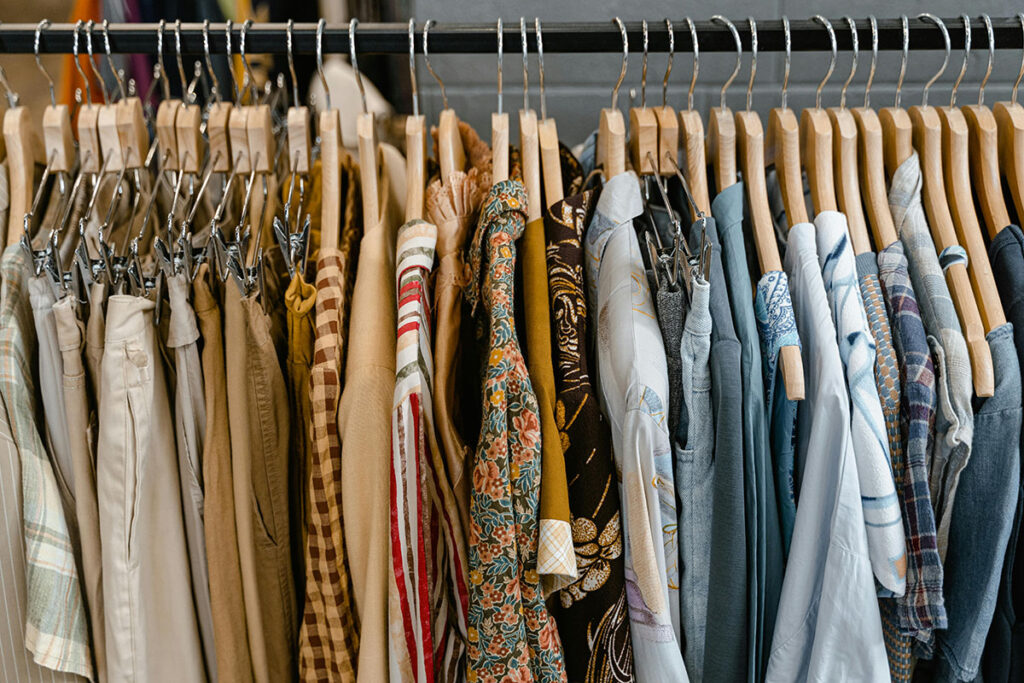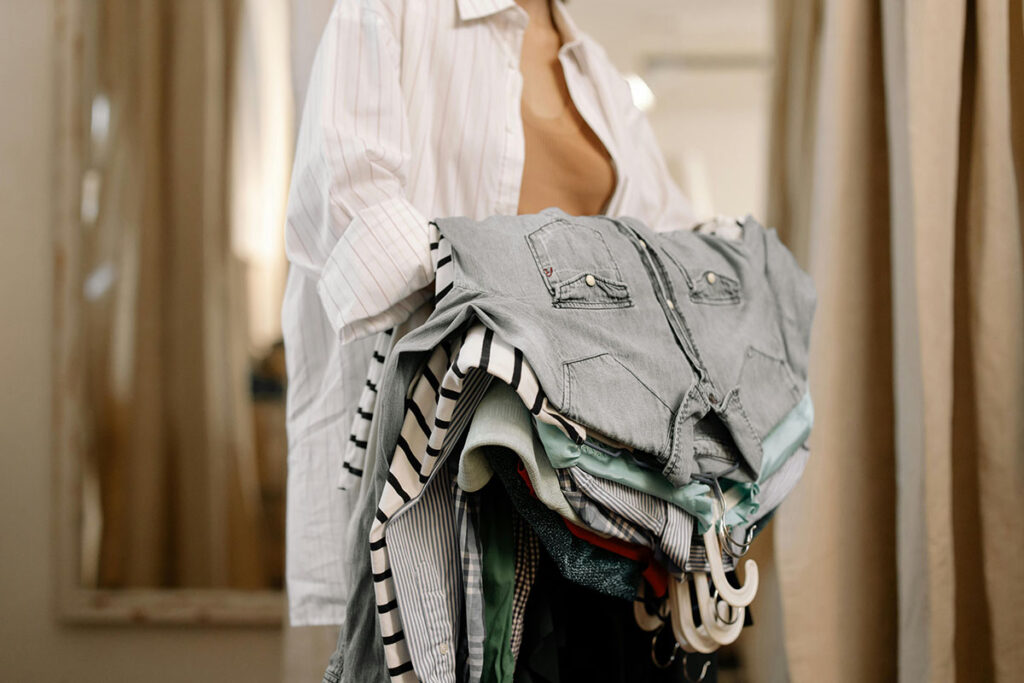Behind the animal-free bomber jacket in Save the Duck’s Soho storefront window is a rigorous network that ensures every link in the supply chain is genuinely sustainable.
The New York City apparel store is a long way from Pinghu, Zhejiang, where 97 employees cut, sew, stuff and iron its garments, or Nantong, Jiangsu, where thousands of employees weave, dye, and market the textiles use to create jackets, shirts, pants and other accessories. When it comes to sustainability, distance is no barrier.
Through third-party audits, Save the Duck ensures that all companies in its supply chain not only protect the health and safety of workers through insurance, support systems, and an above-minimum living wage, but also preserve the planet through reducing raw materials use and ensuring no component is tested on animals by manufacturers.
Save the Duck is one of many retailers whose mission comes before the bottom line. They are proving that ethical fashion starts long before the final product reaches consumers.
More Businesses Go Green
The retail sector is in the top 10 most carbon-intensive industries and it’s responsible for an estimated 25% of global greenhouse gasses. However, there’s good news. The shift toward sustainable fashion is gaining momentum with consumers and across the industry.
When asked about buying environmentally and ethically sustainable products, 78% of U.S. consumers surveyed by NielsenIQ said leading a sustainable lifestyle is important to them. In a McKinsey U.S. consumer sentiment survey, more than 60% of respondents said they’d pay more for sustainable packaging.
While consumer sentiment is likely a reason behind many businesses taking a green approach, a McKinsey study found that there is a correlation between how a company manages resource use and its financial performance. The study suggested that reducing resource costs can create value by boosting operating profits by as much as 60%.
Brands Leading the Charge
While many major corporations have been integrating sustainability plans into their operations, several small to medium-sized businesses are leading the charge with innovative and impactful practices. These companies are changing how we look at fashion and apparel by revolutionizing material creation, using technology to reduce waste, and investing in their supply chains.
Here’s a snapshot of what it takes to do business differently with today’s pressing environmental realities.
Regenerative to Resilient
To help reduce waste, Pangaia has begun using regenerative cotton farming methods that restore nature and rehabilitate soil health. The retailer, known for its sustainable loungewear, also uses recycled and eco-friendly fabrics like hemp, plant-based denim, bamboo, and linen. The company also incorporates natural botanical dyes in its designs, and even uses a plant-based peppermint oil to help prevent bacteria growth. In 2023, the company reported a 40% drop in the amount of carbon emissions it generated from 2021.
Replenishing Resources
Sneaker manufacturer Trash Planet has designed trainers made from 100% vegan materials and up to 75% recycled materials. For every purchase, the company will plant 15 trees to help reforestation efforts.
Nike’s Move to Zero initiative has the goal of powering its facilities with 100% renewable energy by 2025. Nike already diverts 99% of all footwear manufacturing waste from landfills, and plans to continue converting manufacturing waste into usable energy and materials for its products.
Repair and Rewear
Patagonia’s Worn Wear program shows the brand’s commitment to sustainability by encouraging customers to extend the life of their clothing. Customers are urged to repair, recycle, or trade in their used Patagonia gear, reducing waste and promoting a circular economy. In addition to the Worn Wear program, Patagonia offers a wide range of products made from recycled materials, reinforcing their dedication to minimizing environmental impact and fostering a more sustainable approach to fashion.

Revolutionizing Material Creation and Use
Since 2009, Reformation has sold vintage clothing and quickly expanded to produce its own garments using low-impact materials like rescued deadstock fabrics and repurposed vintage clothing. They rank fabrics from A (renewable materials) to D (use only if certified) and have the goal of producing 75% of their products with A and B fibers. As a 100% carbon-, water-, and waste-neutral company, Reformation integrates green practices into every aspect of the business, from its Los Angeles factory to packaging and retail stores, with a commitment to becoming Climate Positive by 2025 through investments in renewable energy within their supply chain.
Technology to Reduce Waste
Stella McCartney is partnering with Protein Evolution Inc. (PEI) to use proprietary recycling technology. The technology allows the British designer to process leftover mixed nylon and polyester from her collections into new products, including clothing, shoes, and other accessories. PEI says the material can be recycled over and over, indefinitely.
A decade ago, a startup called Knyttan created software to allow 3D knitting machines to produce multiple designs at a fraction of the cost. A few years later, Adidas followed suit, launching a pop-up store where customers could get a 3D scan of their bodies and have a one-of-a-kind shirt in just hours. The two are examples of how technology offers ways to uniquely engage customers, and in the process, minimize overproduction and waste.
Third-Party Verification
Back at Save the Duck, the company has committed to donating 1% of its income to support charity initiatives that protect animals, people, and the environment. It has also established a path to net zero by 2030 by collecting data on how the company’s activities generate carbon emissions. Since 2022, the retailer has certified its greenhouse gas inventory according to ISO 14064 standard so that a third party can judge the company’s work toward net zero independently and accurately.
Blockchain for Transparency
Technology company Everledger partners with brands to use blockchain technology that traces the origins of materials to ensure sustainability in supply chains. The technology tracks the history of the garment, including where the material originated, how it was produced and where the material was distributed.
Transparency-One is another platform that uses blockchain technology to provide transparency in the supply chain by helping companies verify their sustainable practices. Blockchain technology is a decentralized, digital ledger that securely records and verifies transactions across multiple computers, ensuring transparency and immutability without the need for a central authority (like a bank or government).
Giving Back to Community
Save the Duck also is partnering with the non-governmental organization, The Sumba Foundation, on a water balance project. As the retailer works to balance the water consumption used during production of its garments, it’s also working to bring drinking water to villages on the island of Sumba, Indonesia.

Future Considerations
As we witness a paradigm shift in the retail industry, sustainability is no longer a mere buzzword, but a critical component of long-term success. The companies leading by example are demonstrating that ethical practices and innovative technologies can drive both positive environmental impact and financial performance.
For retail leaders, the challenge now is to not only adopt these practices but to embed them deeply into their strategic frameworks. Embracing sustainability should be seen as an opportunity to build a resilient brand, foster customer loyalty, and differentiate in an increasingly conscious market.
As we look to the future, the journey toward sustainability will require ongoing commitment and adaptation. By staying informed about emerging trends, investing in sustainable technologies, and transparently communicating efforts, retailers can pave the way for a more sustainable and prosperous future.





